Normally, I wouldn’t give Cedar Sage, Salvia roemeriana, much thought this time of year. A lovely perennial which reaches the zenith of its beauty during spring blooming time, the nice little winter rosettes,
…are fine-n-dandy, but not enough to ‘wow’ about now. But it’s Wildflower Wednesday (thanks to Gail at clay and limestone for hosting) and I’m going to gloat a bit because one of my Cedar Sage plants is in flower-power mode!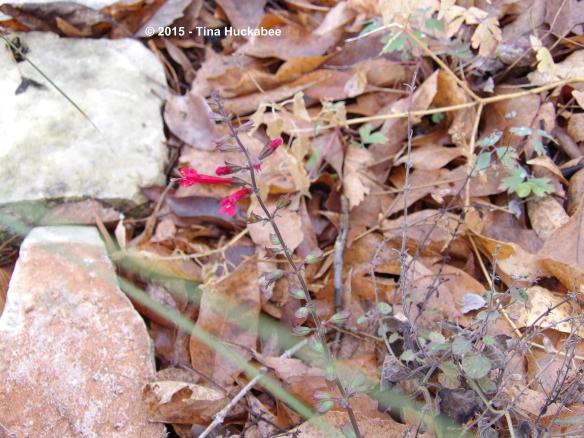
Mmmm. Gorgeous, brilliant red, tubular blooms!! Such eye candy in a dappled shade garden! Even more so as there’s almost nothing else abloom at the moment.
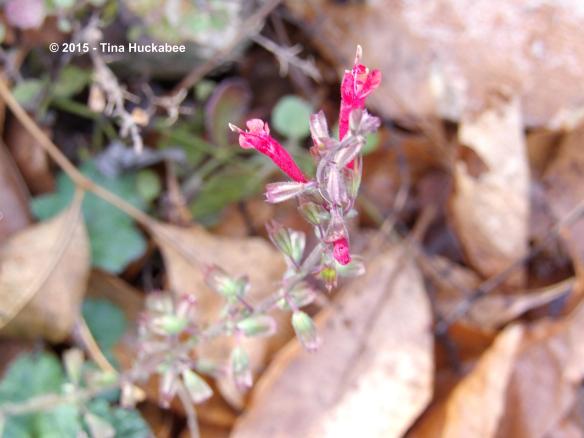 Normal flowering for this small, Texas native, pollinator-friendly perennial is spring to early summer, roughly April to June. The literature suggests that it blooms on and off throughout summer, though mine never blooms past June. That it’s blossoming in late January is odd–it hasn’t happened in my garden ever before. In the public gardens where I formerly worked, I once saw a Cedar Sage with flowers in October and I was surprised and pleased at that out-of-season gift.
Normal flowering for this small, Texas native, pollinator-friendly perennial is spring to early summer, roughly April to June. The literature suggests that it blooms on and off throughout summer, though mine never blooms past June. That it’s blossoming in late January is odd–it hasn’t happened in my garden ever before. In the public gardens where I formerly worked, I once saw a Cedar Sage with flowers in October and I was surprised and pleased at that out-of-season gift.
I’m not complaining about this January wonder–it was a lovely sight last week to see the flowers dancing above the winter rosette, during a rainy few days.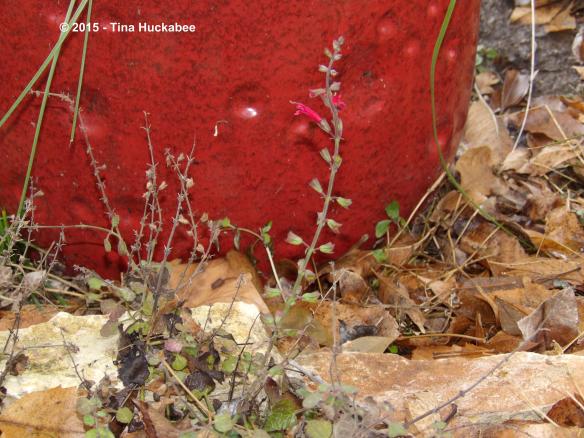
But it’s during late spring that this perennial acting-as-a-ground cover really dazzles.
The scarlet blooms brighten the landscape and provide for a variety of pollinators. I’ve never seen a hummingbird nectaring at the blooms, though Cedar Sage is considered a hummingbird plant. As a member of the salvia species, you can bet it’s deer resistant and it’s a water-wise choice for the shade to dappled-shade garden.
After its typical flowering in spring, the seed heads remain attractive through most of the summer. I don’t prune the stalks back until late summer, or even into autumn–just because I let them seed out and I enjoy the spidery reach of the tawny stalks from the green basal leaves.
Clearly, I didn’t prune this plant back at all.
The Cedar Sage is so-called because it evolved to grow under the shade of Ashe Juniper, Juniperus ashei–commonly called “mountain cedar,” “cedar,” or “damn cedar” (by those highly allergic to its pollen). The foliage of the Ashe Juniper is fine, thus allowing the Cedar Sage seedlings to germinate easily. According the the Lady Bird Johnson Wildflower Center plant data base information, Cedar Sage have trouble germinating under the canopy of large-leafed deciduous trees, owing to the fallen leaves blocking the seeds from soil (and light too, I suppose), thus preventing germination. That hasn’t proven true in my garden though. The plant blooming now is under a non-native Arizona Ash tree, Fraxinus velutina, and the group in my back garden reside under a native Shumard Oak tree, Quercus shumardii. Of course, I do rake up fallen leaves, but my gardens are well-mulched, so I imagine that I don’t get as many seedlings in the garden proper as I would if I didn’t mulch. In fact, many of my Cedar Sage seedlings appear in adjacent pathways. Regardless, there are always a few seedlings each winter from the previous year’s crop of flowers and resulting seeds, and I transplant them to spread their crimson glory.
Cedar Sage is native to a large, but specific area of Texas–from Central to West Texas, in the Edwards Plateau ecoregion; their native range extends southward into northern Mexico.
If you live elsewhere, Cedar Sage might be available as a tender perennial or annual. If you’re in Central to South Texas, it’s a must-have shade plant.
Thanks again to clay and limestone for promoting the beauty and practicality of native plants–click on over and check wildflower plants showcased this January, 2015.

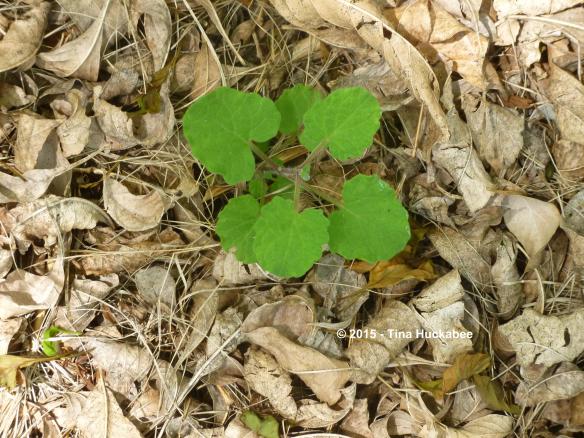
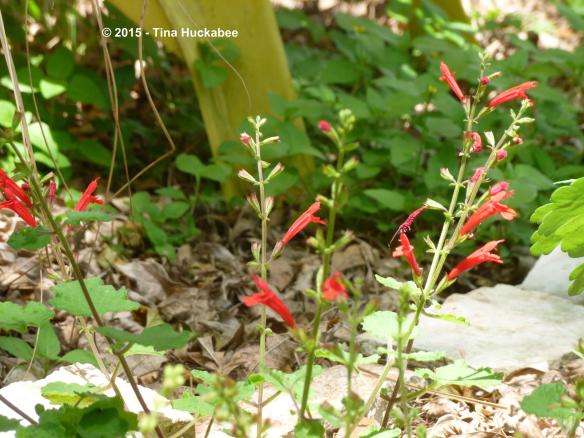
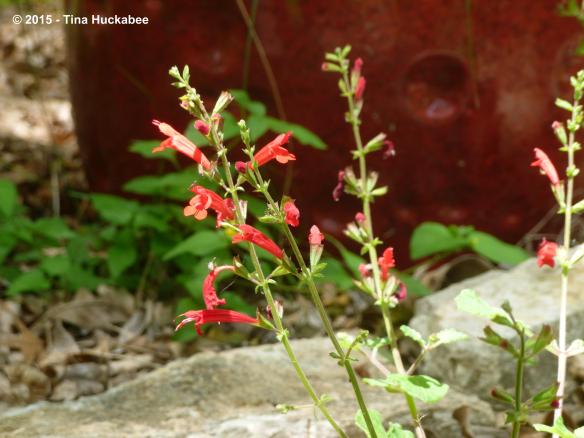
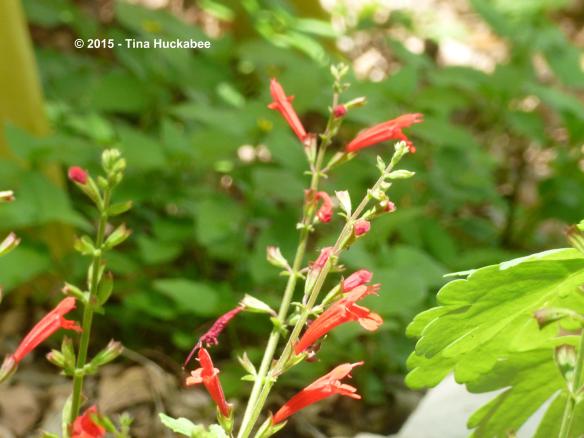
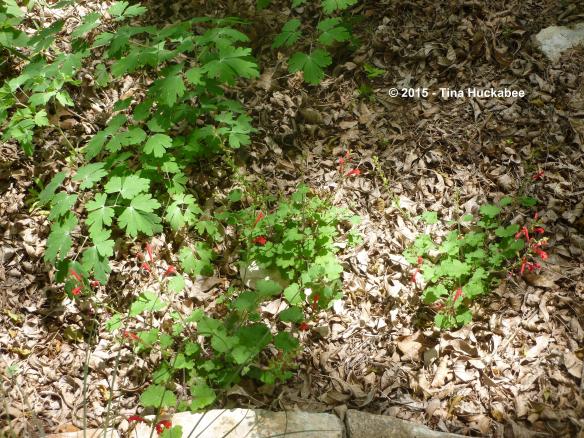
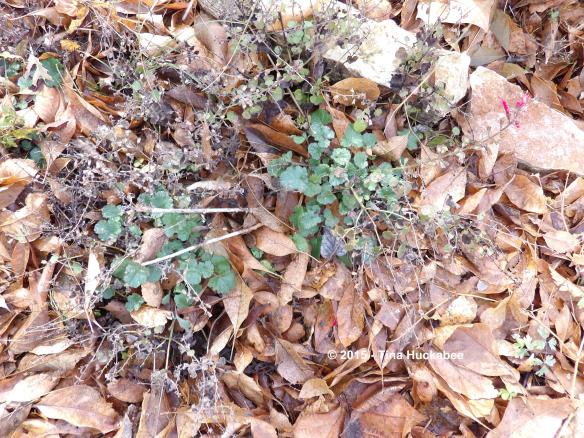
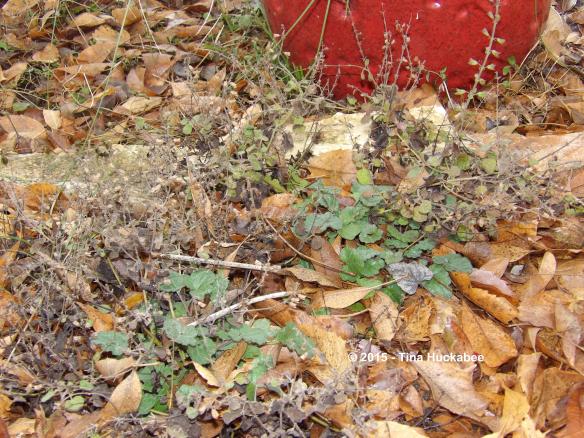
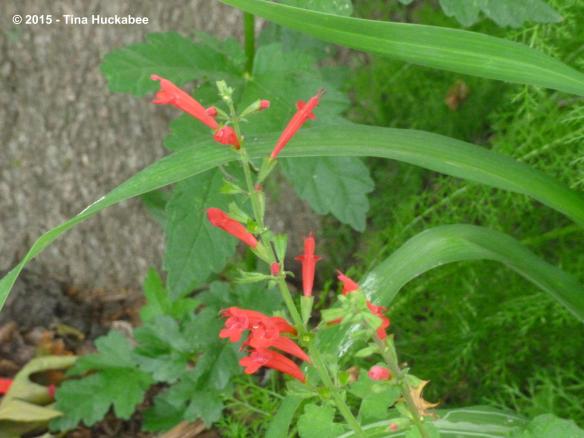
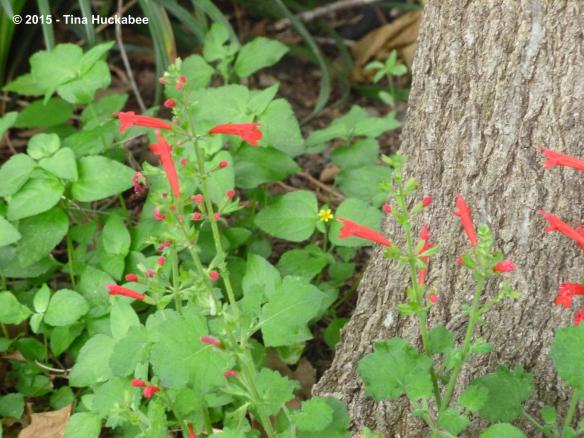
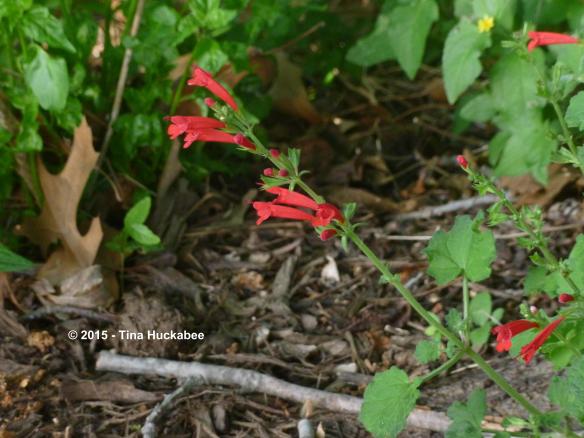
Such a gorgeous little plant that packs a big punch – especially in masses. All my shady areas are under trees with larger leaves so I’d guessed I couldn’t use cedar sage in my beds but now I’m guessing again. I shouldn’t believe everything I read (except here).
OK for the record, that’s reports of clover, bluebonnets and cedar sage all blooming early this year. That in combination with trees holding their leaves longer probably means something specific to botany whiz types which I am not. It at least seems to my unscientific eye that certain seasonal triggers are firing differently this year. Weird!
LikeLike
Firing differently, indeed. It’s so mild. I worked yesterday in shorts–that’s just wrong in January!
I don’t get many Cedar Sage seedings/year, but there are always a few. I mulch well and so they don’t come in contact with the soil all that readily. I would think that your situation would beg for Cedar Sage: shade and deer. Try them (the plant, not the deer), I’ll be they’ll grow well for you.
LikeLike
I really like cedar sage. Mine planted themselves making them even more welcome. But like a lot of natives they can have mysterious preferences. They grow well on one side of my backyard path so a couple of years ago I thought: hmm … maybe I’ll transplant some of those to the other side of the path. I even sprinkled some seed. They just refused to grow in the new area while the original self planted ones continued to thrive. Three feet away made a completely impossible growing situation. I am still not sure what the crucial difference was. Light? Soil? Neither area is irrigated.
LikeLike
Ah, the whimsical nature of plants and their gardens. No clue what’s going on. I’ve had similar issues with other plants–love one spot, hate another four feet away. I do find that Cedar Sage is slightly tricky to transplant–it’s not one of those you can just pop into the ground and have instant success. Then again, there aren’t many of those around here….
LikeLike
Mysterious. And that is kind of cool.
LikeLiked by 1 person
Thats a new plant to me Tina, we’ve had some early shows here but nowhere near as early as your salvia, its very pretty.
LikeLike
It is pretty, Julie. It’s always fun, though maybe weird, to have something bloom so out of its season.
LikeLike
Very pretty!
Fantastic to find it blooming in January!
Lea
LikeLike
It was a surprise, to be sure, Lea, but a welcomed one.
LikeLike
I was just noticing that we had some flowers blooming outside of our apartment here in Taiwan. At the end of January. When I’m usually complaining about the lack of central heating. I was actually thinking of taking a couple photos and posting them. You may have inspired me to follow through. 🙂
LikeLike
Post away!! I’d love to see what’s blooming in Taiwan. Carol’s (May Dreams Garden) will hostess Garden Bloggers’ Bloom Day in 2 short weeks–go for it!
LikeLike
I seem to remember seeing it as an annual here, which seems like a good choice for the center of a potted arrangement. And you say it likes shade! Great! Thanks for the idea. I plant several pots of Fuchsia for the hummingbirds, so maybe I’ll add Cedar Sage this year. Happy belated Wildflower Wednesday!
LikeLike
Oh wow!! Nice that it’s available. Oh, Fuchsia and Cedar Sage. Excuse me while wipe off the drool from the keyboard.
LikeLike
Lucky you to have this beautiful sage…the flower color is really pretty.
LikeLike
It’s a great little plant and a beautiful, vibrant red.
LikeLike